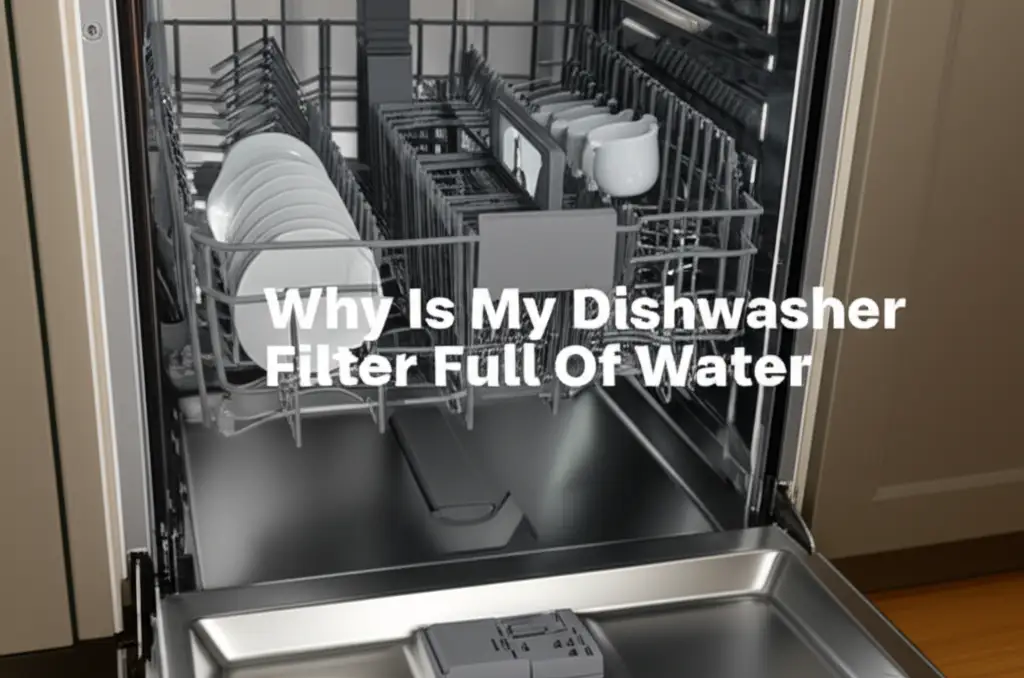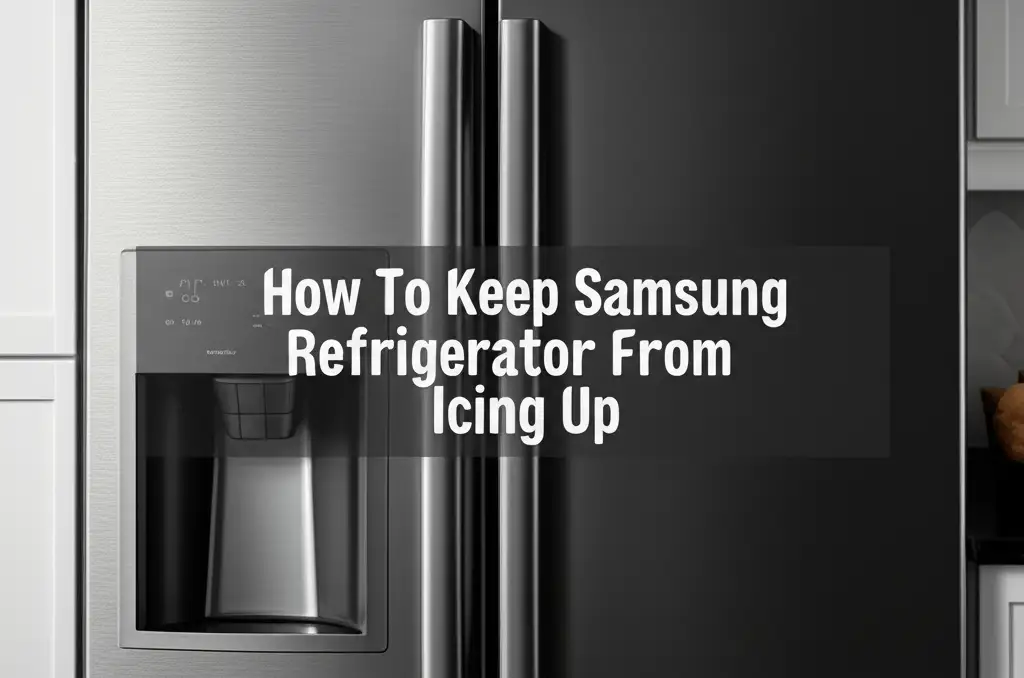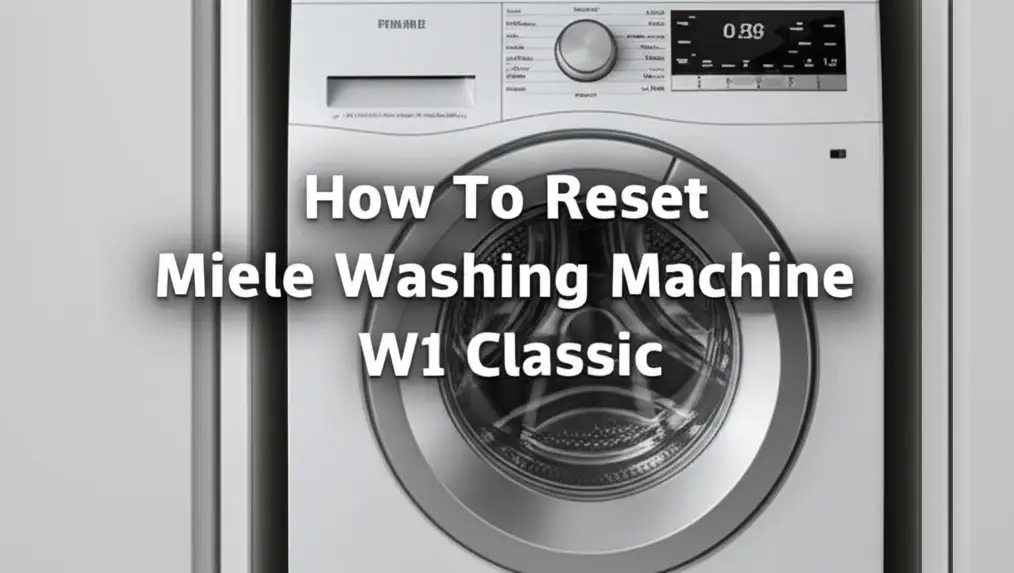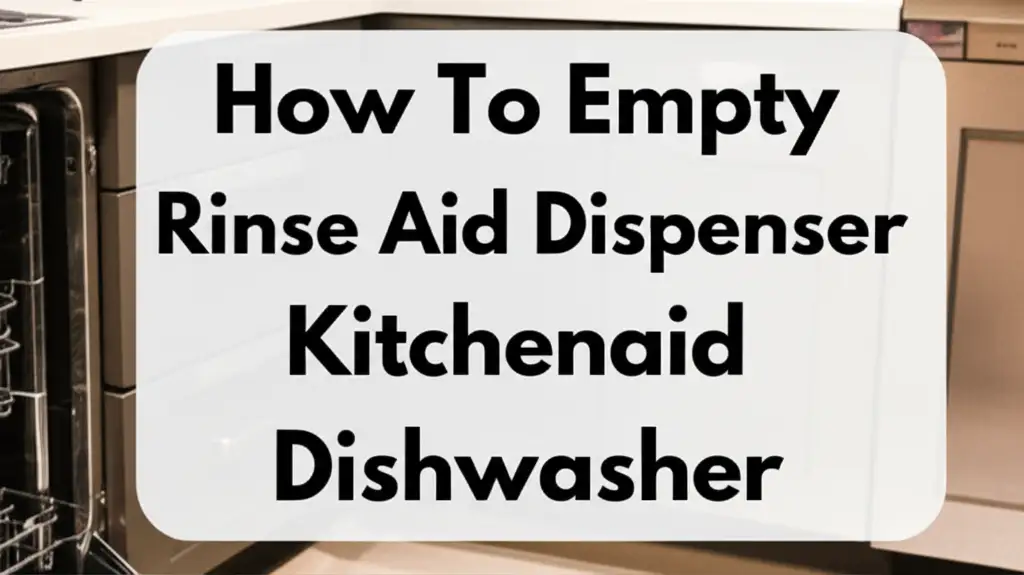· Katria Melrose · Appliance Maintenance · 16 min read
Why Is My Dishwasher Filter Full Of Water

Why Your Dishwasher Filter Is Full Of Water
It’s a familiar sight for many homeowners: you open your dishwasher after a cycle, and instead of sparkling clean dishes, you find standing water in the bottom. Often, this water collects directly in and around the dishwasher filter. This issue can be frustrating, making you wonder what went wrong. Understanding why your dishwasher filter is full of water is the first step to resolving the problem.
This article explores the primary reasons behind a water-logged dishwasher filter. We will discuss common culprits, from simple clogs to more complex drainage issues. You will learn practical troubleshooting steps and effective preventative maintenance tips. By the end, you will have a clear understanding of how to keep your dishwasher running efficiently.
Takeaway
- Clean Your Filter Regularly: A clogged filter is the most common cause of standing water.
- Inspect Drain Hose: Ensure the drain hose is clear and properly installed without kinks.
- Check Air Gap: If present, clear any obstructions in your dishwasher’s air gap.
- Verify Drain Pump: A faulty drain pump prevents water removal.
- Practice Good Scrape Habits: Scrape food debris from dishes before loading to prevent clogs.
Your dishwasher filter holds water primarily due to a drainage obstruction. This can result from a clogged filter, a kinked or blocked drain hose, an obstructed air gap, or a malfunctioning drain pump. These issues prevent water from properly exiting the dishwasher, leading to water accumulation in the sump and filter area.
The Essential Role of Your Dishwasher Filter
My dishwasher is a vital appliance, making kitchen cleanup much easier. At its core, the dishwasher relies on several components to achieve that sparkling clean. One often overlooked, yet crucial, part is the dishwasher filter. This filter plays a significant role in how well your machine cleans and drains.
The filter’s main job is to catch food particles and debris. Without it, these small pieces of food could recirculate during the wash cycle. This would leave residue on your dishes. It would also potentially clog the spray arms and pump. The filter keeps your wash water clean. It also protects other internal components from damage.
There are generally two types of dishwasher filters: manual and self-cleaning. Manual filters require you to remove and clean them by hand. Self-cleaning filters use a grinder to break down food particles. Even self-cleaning filters need occasional attention. Both types aim to prevent larger debris from entering the drain pump. A healthy filter ensures your dishwasher performs at its best.
When your dishwasher filter is full of water, it points directly to a drainage problem. The filter simply cannot do its job if water cannot pass through it effectively to drain away. This often means something is blocking the path water takes to exit the machine. It highlights the importance of this small but mighty component in the overall system. A well-maintained filter is key to a functional dishwasher.
Primary Culprit: A Clogged Dishwasher Filter
When you find your dishwasher filter full of water, a clogged filter is the most common and often the simplest explanation. This happens because the filter’s job is to trap food scraps and debris. Over time, these collected particles build up. This accumulation forms a barrier. This barrier prevents water from draining properly.
Imagine a kitchen sink drain with too much food going down. Eventually, it will slow down or stop completely. Your dishwasher filter works similarly. As food particles like rice, pasta, grease, and even paper labels get caught, they reduce the filter’s capacity. Water then backs up in the filter housing and the bottom of the dishwasher tub. This causes the standing water you observe.
A visibly dirty filter is a strong indicator of this issue. You might see chunks of food, grease, or grime coating the mesh or cylinder. Regular cleaning is essential to prevent this buildup. Many people forget to clean this component, leading to ongoing drainage problems. I make sure to check mine regularly now.
To fix this, you must remove and thoroughly clean the filter. Most filters are easy to twist out from the bottom of the dishwasher tub. You can rinse it under running water to remove loose debris. For stubborn grime, use a soft brush and warm, soapy water. This simple step often resolves the problem immediately. After cleaning, reinstall the filter correctly to ensure proper operation. Learning how to clean a filter in a dishwasher can save you a lot of hassle.
Beyond the Filter: Common Drainage Obstructions
While a clogged filter is the usual suspect, standing water can also signal other drainage obstructions. The dishwasher’s drain system is a network of components. If any part of this system gets blocked, water cannot exit. This results in the dishwasher filter being full of water. Understanding these potential blockages helps in thorough troubleshooting.
One common area to check is the dishwasher drain hose. This hose connects your dishwasher to your sink drain or garbage disposal. It can get kinked, twisted, or even clogged internally with grease and food debris. A kinked hose restricts water flow, causing water to back up. If your hose runs through a cabinet, items stored there might accidentally press against it. You should inspect the hose for any visible bends or kinks.
Another potential blockage point is the garbage disposal connection. If your dishwasher drains into a garbage disposal, the disposal itself can be the source of the problem. If the disposal is full of food, or if the knockout plug was not removed during installation, water will not drain. Always run your garbage disposal before starting the dishwasher. This clears any food in the drain path. Also, if a new disposal was installed, ensure the dishwasher knockout plug inside the disposal’s inlet has been removed.
Some dishwashers use an air gap on the countertop. This small cylindrical device prevents dirty water from siphoning back into the clean water supply. The air gap can become clogged with food particles. This blockage prevents water from flowing freely through it. If you have an air gap, check for obstructions within it. Clearing these obstructions might involve removing the air gap cap and cleaning out any debris. Addressing these common drainage obstructions can often resolve the problem of water accumulating in your dishwasher.
Pump Problems and Siphon Effects
Sometimes, the issue of a dishwasher filter full of water goes beyond simple clogs. It might point to a problem with the dishwasher’s drain pump or an improper setup causing a siphon effect. These issues can prevent your dishwasher from expelling water, leading to accumulation. Knowing these possibilities helps in diagnosing the root cause.
A malfunctioning drain pump is a significant concern. The drain pump is responsible for forcibly pushing the water out of the dishwasher and into the drain line. If this pump is faulty, it simply won’t remove the water. You might hear strange noises, or no noise at all, when the dishwasher should be draining. Debris can also jam the impeller inside the pump. This prevents it from spinning freely. If the pump is humming but not draining, it could be jammed. If it makes no sound, it might be an electrical issue or a completely failed motor.
Another less common but important cause is a siphon effect created by improper drain hose installation. If the drain hose is installed too low, below the level of the dishwasher’s bottom, water can continuously siphon back into the tub. This happens even after a cycle finishes. Most dishwashers require a high loop in the drain hose. This high loop prevents dirty water from flowing back into the dishwasher from the sink drain. It ensures water only drains when the pump activates. Without this loop, gravity can pull water back into the tub.
To check for a siphon effect, ensure your drain hose has a high loop. This loop should be at least as high as the top of the dishwasher. It connects either to an air gap or directly to a connection point under your sink, high up. This simple installation detail prevents constant backflow. Addressing pump issues typically requires professional help. Adjusting the drain hose, however, is often a DIY fix. Understanding these potential issues helps resolve persistent water problems. Many guides discuss standing water issues, such as why your LG dishwasher has water in the bottom.
Installation and Maintenance Mistakes
Sometimes, the reason your dishwasher filter is full of water stems from how the appliance was installed or how it is maintained. Overlooking simple installation guidelines or neglecting routine care can lead to recurring drainage issues. These mistakes are often easy to correct once identified. I learned this the hard way myself.
Improper drain hose installation is a frequent cause. As mentioned earlier, a high loop is critical for the drain hose. If the hose runs directly from the dishwasher to a low connection point under the sink, gravity can pull wastewater back into the dishwasher. This creates the dreaded siphon effect. The high loop ensures that water must be pumped uphill, preventing backflow. Without this, your dishwasher tub and filter can remain full of standing water. Always check that the drain hose is properly secured with a high loop.
Another common mistake involves the garbage disposal knockout plug. If your dishwasher drains into a garbage disposal, a small plastic plug inside the disposal’s inlet must be removed during installation. If this plug is left in, it completely blocks the drainage path from the dishwasher. Water will have nowhere to go and will back up into the tub. This is a very common oversight during new installations. If you recently installed a new disposal, this is the first thing to check.
Neglecting regular filter cleaning is a primary maintenance error. I cannot stress this enough. The dishwasher filter is designed to catch food particles, and it will get dirty. If you don’t clean it regularly, these particles build up and create a solid blockage. This blockage prevents water from draining properly, leaving it standing in the tub and filter area. Many manufacturers recommend cleaning the filter monthly or even more frequently with heavy use. It is a quick and simple task that prevents most drainage issues. Knowing how often you should clean your dishwasher filter is crucial.
Furthermore, overloading the dishwasher or not scraping plates before loading can contribute to the problem. Excess food debris and grease overload the filter. This speeds up its clogging process. It is best to scrape off large food particles before placing dishes in the dishwasher. These simple steps ensure proper drainage and extend the life of your appliance.
Step-by-Step Troubleshooting for a Full Filter
Finding your dishwasher filter full of water can be frustrating, but many issues are fixable with simple troubleshooting. Here is a systematic approach you can take. These steps help you identify and resolve the problem. I follow this process whenever I notice a problem.
Safety First: Disconnect Power. Before touching any internal components, always unplug your dishwasher or turn off its circuit breaker. This prevents any accidental starts or electrical shocks. Safety is paramount when dealing with appliances.
Inspect and Clean the Dishwasher Filter.
- Open the dishwasher door.
- Locate the filter at the bottom of the tub. It usually consists of a cylindrical filter and a flat filter screen.
- Twist or lift to remove the filter components.
- Rinse them thoroughly under warm running water. Use a soft brush or old toothbrush to scrub away any stuck-on food debris, grease, or grime.
- Make sure all mesh areas are clear.
- Reinstall the clean filter components securely. Incorrect reinstallation can also cause issues. For specific instructions on how to put your filter back in, you might find guides like how to put a Frigidaire dishwasher filter back in helpful.
Check the Drain Hose.
- Locate the drain hose. It typically connects from the back of the dishwasher to the plumbing under your sink or garbage disposal.
- Look for any visible kinks, bends, or twists in the hose. Straighten them out.
- If you suspect an internal clog, you might need to disconnect the hose at both ends and visually inspect it. Blow air through it to check for obstructions. A plumber’s snake can clear stubborn blockages.
Inspect the Air Gap (If Applicable).
- If your dishwasher has an air gap on the countertop, remove its decorative cap and then the inner cap.
- Check for any visible debris or sludge inside.
- Clean out any obstructions using a paper towel or a small brush.
Verify the Garbage Disposal Connection.
- If your dishwasher drains into a garbage disposal, ensure the disposal is clear of food. Run the disposal for a minute or two.
- If a new disposal was recently installed, confirm that the “knockout plug” inside the disposal’s dishwasher inlet port was removed. This is a common installation oversight.
Test the Drain Pump.
- After checking the above, run a short drain cycle on your dishwasher (if your model has one).
- Listen for the drain pump engaging. It should make a distinct humming or whirring sound as it expels water.
- If you hear no sound, or if it hums without draining, the pump might be faulty or jammed. This often requires professional service.
By following these steps, you can systematically diagnose and potentially fix the reason your dishwasher filter is full of water. This approach covers the most common causes, empowering you to tackle the problem effectively.
Preventing Future Dishwasher Drainage Issues
Once you have resolved the issue of your dishwasher filter full of water, you will want to prevent it from happening again. Proactive maintenance and good habits are key to keeping your dishwasher draining properly. Implementing these simple practices will save you time and frustration in the long run.
Firstly, make regular filter cleaning a priority. This is the single most important preventative measure. I recommend cleaning your dishwasher filter at least once a month, especially if you use your dishwasher frequently. If you often wash heavily soiled dishes, clean it more often, perhaps every two weeks. This prevents the buildup of food particles and grease. It ensures water can flow freely through the filter and drain out. Think of it like changing the oil in your car. It’s routine maintenance that prevents bigger problems.
Secondly, scrape plates thoroughly before loading them into the dishwasher. While dishwashers are designed to handle some food residue, they are not garbage disposals. Large food particles, such as rice, pasta, bones, or excessive grease, can quickly clog the filter and drain lines. By scraping off excess food into the trash before loading, you significantly reduce the amount of debris entering your dishwasher’s drainage system. This simple habit protects your filter and pump.
Thirdly, run your garbage disposal before starting the dishwasher (if your dishwasher drains into it). This clears any food debris that might be in the disposal or its drain line. A clear disposal ensures an unobstructed path for your dishwasher’s wastewater. It’s a quick step that can prevent backflow issues.
Fourthly, periodically check your drain hose for kinks or blockages. Every few months, pull your dishwasher out slightly (if accessible) or inspect the hose under the sink. Ensure it has a proper high loop and is free of kinks. Over time, hoses can sag or get accidentally compressed. Straightening them out prevents flow restrictions.
Finally, run a hot water rinse or a dishwasher cleaning cycle regularly. Using a dishwasher cleaner or a cup of white vinegar on an empty hot water cycle can help dissolve grease and mineral deposits. These deposits can build up in the dishwasher’s internal components, including the drain lines, over time. A clean interior system supports efficient drainage. By adopting these preventative measures, you can minimize the chances of finding your dishwasher filter full of water again.
FAQ Section
Q1: How often should I clean my dishwasher filter?
You should clean your dishwasher filter at least once a month. If you use your dishwasher frequently, or wash heavily soiled dishes, clean it every two weeks. This regular maintenance prevents food particles and grease from building up and causing drainage issues. Consistent cleaning helps maintain optimal dishwasher performance.
Q2: Can a clogged garbage disposal affect my dishwasher drainage?
Yes, absolutely. If your dishwasher drains into your garbage disposal, a clogged or full disposal can prevent your dishwasher from draining properly. Water will back up into the dishwasher tub and filter. Always run your garbage disposal before starting the dishwasher to clear its contents and ensure a clear drainage path.
Q3: What is a high loop, and why is it important for dishwasher drainage?
A high loop is an upward curve in your dishwasher’s drain hose, positioned as high as possible under the sink or countertop. It prevents wastewater from your sink drain from siphoning back into the dishwasher tub due to gravity. The high loop ensures water only drains when the dishwasher pump activates, preventing standing water.
Q4: My dishwasher is humming but not draining, what does that mean?
If your dishwasher is humming but not draining, it often indicates the drain pump is trying to work but is obstructed. This usually means the pump’s impeller is jammed by debris like glass shards, food particles, or a small foreign object. It could also suggest a failing motor or an electrical issue preventing proper operation.
Q5: Can I run my dishwasher without a filter?
No, you should not run your dishwasher without its filter. The filter is essential for trapping food particles and preventing them from recirculating onto your dishes or clogging the drain pump and spray arms. Running it without a filter can lead to poor cleaning performance and potential damage to internal components.
Q6: What kind of debris commonly clogs dishwasher filters?
Dishwasher filters commonly get clogged by a variety of food debris. This includes rice grains, pasta, vegetable scraps, small bones, coffee grounds, and paper or plastic labels from food packaging. Grease and soap scum also contribute significantly to buildup over time. Scraping dishes prevents most of these clogs.
Conclusion
Finding your dishwasher filter full of water is a clear sign that your appliance needs attention. Most often, the problem stems from a simple, yet critical, blockage in the drainage system. Understanding the role of your dishwasher filter and the common culprits behind standing water empowers you to diagnose and fix the issue. Whether it’s a clogged filter, a kinked drain hose, an air gap obstruction, or even a problem with the drain pump, each element plays a part in keeping your dishwasher running smoothly.
By following the troubleshooting steps outlined, you can often resolve the issue yourself. Remember to prioritize safety by disconnecting power first. Regular maintenance, especially cleaning your dishwasher filter, is your best defense against recurring drainage problems. Scrape dishes thoroughly, ensure your drain hose has a high loop, and run your garbage disposal before starting a wash cycle. These proactive measures keep your dishwasher efficient and prevent the frustration of standing water. Take action today to maintain your appliance. A well-maintained dishwasher is a happy and effective dishwasher. Your dishes will thank you!





